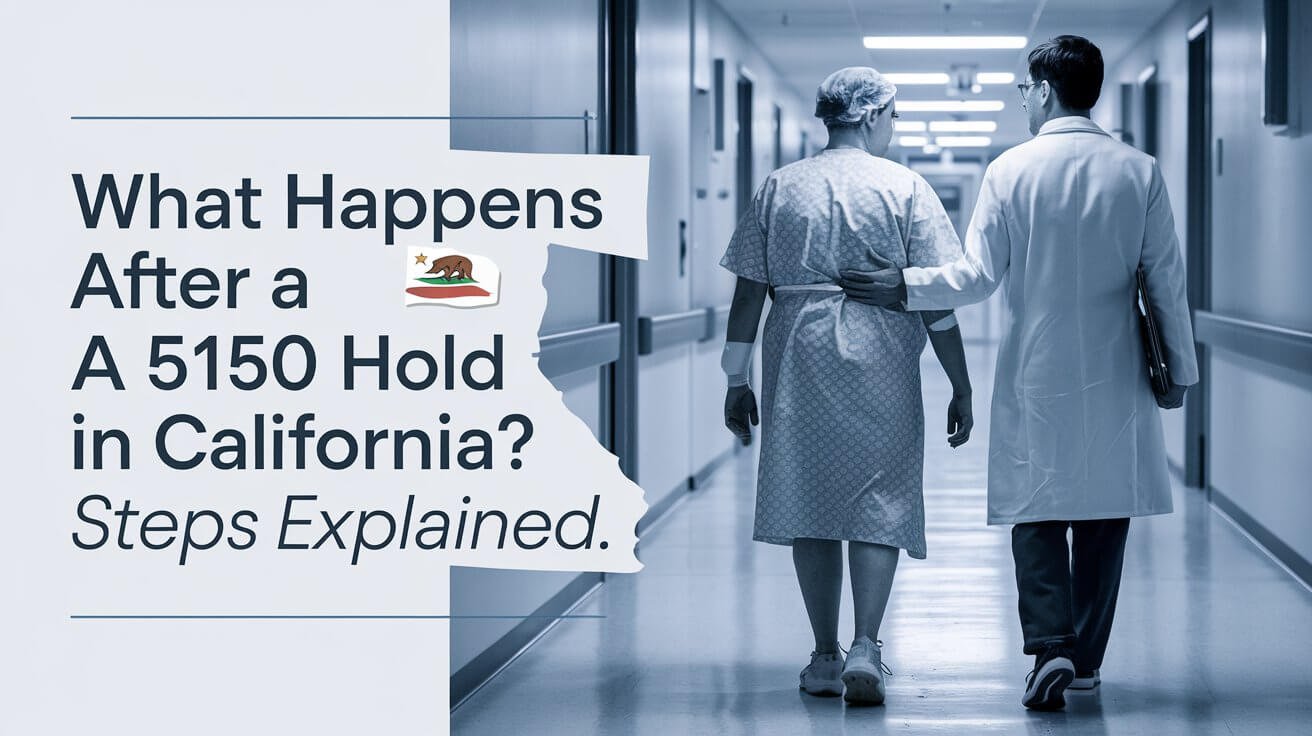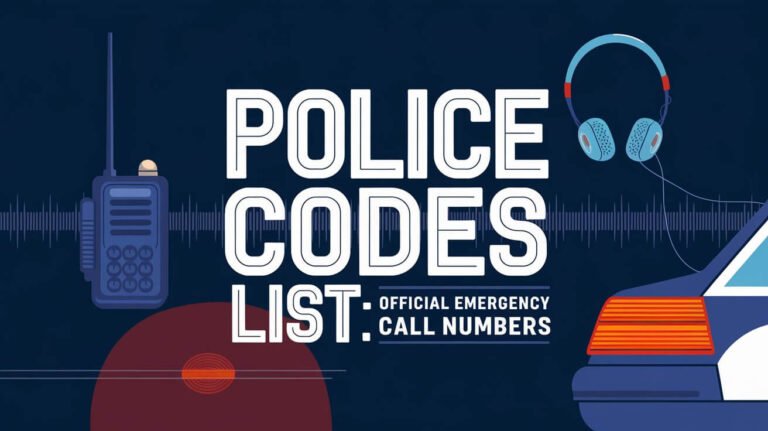What Happens After A 5150 Hold In California? steps

A 5150 psychiatric hold in California can be scary during a mental health crisis. But, what happens after this 72-hour hold? Knowing the process and your rights is key to moving forward. So, what lies ahead for those under a 5150 hold?
Understanding California’s 5150 Involuntary Psychiatric Hold
In California, the 5150 hold is a key law. It lets authorities take someone into care if they’re a danger to themselves or others. This is for those in a mental health crisis.
This law is in the California Welfare and Institutions Code. It helps get help fast for those in mental health emergencies.
Legal Definition and Purpose
The 5150 hold lets police, mental health workers, and county staff take someone into custody. They do this for a 72-hour check-up. The goal is to keep the person safe and get them the help they need.
Key Criteria for Implementation
To use a 5150 hold, someone must meet certain criteria. They must be a danger to themselves, others, or be so disabled by their mental health they can’t care for themselves. A mental health expert or trained officer makes this call.
Duration and Initial Assessment
A 5150 hold can last up to 72 hours. During this time, the person gets a full check-up and treatment. If they still pose a risk or are disabled after 72 hours, they might get a 5250 hold. This can extend their stay for up to 14 more days.
Process of 5150 Hold Implementation
In California, the Lanterman-Petris-Short (LPS) Act lets authorities hold someone for up to 72 hours. This is called a 5150 hold. It’s for people who might harm themselves or others, or who can’t take care of themselves because of a mental issue.
Many can start a 5150 hold. This includes police, mental health workers, and even people who see someone acting strangely. Signs that might lead to a 5150 include being very aggressive, talking about suicide, or not being able to take care of basic needs.
When a 5150 hold happens, the person is taken to a mental health center. There, they learn about their rights. This includes the right to say no to treatment, unless it’s an emergency.
| Criteria for a 5150 Hold | Possible Outcomes |
|---|---|
| 1. Danger to self 2. Danger to others 3. Gravely disabled due to mental illness | 1. Release after 72 hours 2. Voluntary treatment continuation 3. Conservatorship referral 4. 5250 hold for an additional 14 days |
The 5150 hold is a key way to help people in a mental health crisis. It keeps them safe. By knowing about 5150 holds, healthcare workers and the community can help those in need.
What Happens After A 5150 Hold In California?
In California, a 72-hour involuntary psychiatric hold, known as a 5150 hold, can lead to more actions. This depends on the person’s condition and what mental health experts think. After the initial treatment, the next steps can differ.
Immediate Post-Hold Evaluation
After the 5150 hold ends, a quick evaluation happens. It checks if the person still needs involuntary treatment. This looks at if they’re a danger to themselves or others, or can’t take care of themselves because of their mental health.
Possible Extensions (5250 and 5260)
If the evaluation finds they need more help, a 5250 hold might be used. This allows up to 14 more days of treatment. A 5260 hold can extend treatment for up to a year if they’re still seen as a threat.
Release Procedures and Requirements
When someone no longer needs involuntary treatment, they’re released. The release process checks their condition and creates a care plan. This plan might include outpatient services, medication, and referrals to mental health resources.
Rights and Protections During a 5150 Hold
People under a 5150 hold in California have certain rights and protections. These help keep them safe and treated fairly, even when they can’t make decisions for themselves.
One important right is the chance to talk to a lawyer. They can ask for a judge’s review of the hold. This helps prevent patient rights 5150 issues, like 5150 wrongful imprisonment.
Patients must agree to any treatment they get. They need to know the risks and benefits. They can also say no to some treatments, unless it’s very dangerous.
- Protection from abuse or neglect during the hold
- The right to be informed of their rights and the reasons for the hold
- Access to their medical records and the ability to challenge their diagnosis or treatment plan
These rights and protections make sure people under a 5150 hold are treated with respect. They help protect their basic rights, even when they’re not in control.
Treatment Options and Medical Care During the Hold
When someone is under a 5150 hold in California, they get a detailed psychiatric check. This check might include interviews, watching them, and looking at their health history. It’s all to figure out the best way to help them during their mental health crisis.
Psychiatric Evaluation Process
The psychiatric check is a key part of the 5150 process. Doctors and psychologists do a deep dive to understand the person’s situation. They look at symptoms and what might be causing the crisis. This helps decide the best treatments during the hold.
Medication Management
Medicine is often used during a 5150 hold. People might get drugs like antidepressants or mood stabilizers to help with their symptoms. But, they must agree to take the medicine, and they get to help decide their treatment.
Therapeutic Interventions
People under a 5150 hold also get therapy and counseling. This can be one-on-one or in groups. The aim is to give them the best care and support during their time under the hold.
During the 5150 hold, the person’s rights and well-being are top priority. There are strict rules to make sure they get the right care. And they are protected by their legal rights and safeguards.
Role of Mental Health Professionals and Law Enforcement
In California, mental health experts and law enforcement are key in using a 5150 hold. They work together to keep people safe during a mental health crisis.
Experts like psychiatrists, psychologists, and social workers check if a 5150 hold is needed. They look for danger signs and if someone is unable to care for themselves because of a mental health issue.
Police often start the 5150 process, especially when there’s a public disturbance. They can hold someone and take them to a psychiatric facility for help.
At the facility, mental health teams focus on helping the person. They aim to make the person stable, give the right medicine, and plan for their future care.
| Mental Health Professionals | Law Enforcement Officers |
|---|---|
| 1. Conduct comprehensive evaluations 2. Determine if 5150 criteria are met 3. Provide treatment and stabilization 4. Develop plans for ongoing care | 1. Initiate 5150 holds in emergency situations 2. Detain and transport individuals to psychiatric facilities 3. Collaborate with mental health professionals 4. Ensure public safety during the process |
Working together, mental health teams and police make sure the 5150 process works well. This ensures people get the help they need during a crisis.
Family Involvement and Support Resources
When a loved one gets a 5150 hold in California, family support is key. Talking to healthcare providers and using family resources helps a lot. It ensures the person gets the right care and goes back to their community smoothly.
Communication with Healthcare Providers
Families should talk a lot with healthcare teams about the 5150 process. They can talk to psychiatrists, social workers, and case managers. This helps them understand the treatment plan, how the person is doing, and what they need to get better.
Available Support Services
- The Office of Consumer and Family Affairs offers help and advice for families in the mental health system.
- The NAMI (National Alliance on Mental Illness) Warmline gives emotional support, info, and referrals to families.
- Crisis hotlines, like the 988 Suicide & Crisis Lifeline, offer immediate help and support services.
Navigation of the Mental Health System
The mental health system can be hard to understand, especially in a crisis. Support services help families grasp the legal side of the 5150 hold and the person’s rights. They also explain how to move to ongoing care. Working with healthcare teams and using resources ensures the best treatment for their loved one.
Transition to Ongoing Care and Treatment
After a 5150 hold, moving to ongoing mental health care is key for long-term well-being. This may include outpatient therapy, support groups, and medication management. It’s also important to connect with comprehensive mental health services in California.
Ensuring a smooth transition to continued care is vital. It helps in fostering sustained recovery and preventing future mental health crises.
One important step is the immediate post-hold evaluation. Healthcare providers will check the individual’s mental state and treatment needs. They will also look at risk factors to decide the next steps.
If the person is deemed stable enough for release, the focus shifts. They will connect with ongoing mental health services in their local community. This includes referrals to outpatient therapists and support groups.
Families and caregivers play a crucial role in navigating the mental health system. They advocate for the individual’s needs and ensure they get the necessary support. Communication with healthcare providers and understanding available resources are key.
Prioritizing a smooth transition to ongoing care, individuals can continue their journey towards mental health recovery. This comprehensive approach is essential for preventing future crises and promoting long-term stability.
Legal Considerations and Patient Advocacy
When someone is placed under a legal process 5150 in California, they have rights. They can get legal help and challenge the hold. These steps protect their rights and ensure fairness in the process.
Right to Legal Representation
People under a 5150 hold can get an attorney. They can ask for a public defender or choose their own lawyer. This helps them during the involuntary commitment process.
Certification Review Hearings
A Certification Review Hearing must happen within four days of the 5150 hold. There can be a 48-hour delay if the person can’t attend. At this hearing, a panel decides if the person needs to stay in the hospital.
Patient Rights Protection
Patients’ Rights Advocates are key in protecting rights during the legal process. They look into abuse, neglect, or rights violations. They also represent the person at hearings to protect their rights.
Knowing about legal rights and advocacy helps those under a 5150 hold. It gives them confidence and ensures their rights are looked after.
Impact on Future Mental Health Treatment
A 5150 hold in California can greatly affect someone’s future mental health care. This involuntary action is meant to stabilize and assess someone right away. It can also lay the groundwork for ongoing support and care.
After a 5150 hold, people might find themselves with detailed treatment plans and access to mental health services. This experience can change how they view seeking help. They might understand their options better and be more active in taking care of themselves.
The 5150 process starts a conversation between the person, mental health experts, and their loved ones. This teamwork helps create a plan to tackle the root problems. It aims to stop future crises and improve mental health in the long run.
Even though a 5150 hold can be tough, it can also lead to positive changes. By working with the mental health system and finding the right resources, people can learn more about their condition. They can then take steps towards a healthier, happier life.
Conclusion
The 5150 psychiatric hold in California is key for those in mental health crises. It helps by understanding the laws, rights, and resources available. This way, both the person in need and their supporters can handle the situation better.
Quick assessments, right treatments, and ongoing care are the goals of the 5150 hold. It aims to make people stable, connect them with mental health services, and help them recover.
California is working hard to improve its mental health system. Programs like CARE Court show a strong commitment to helping those with severe mental illnesses. They offer personal support, legal help, and access to services to better people’s lives.
The success of the 5150 hold and mental health help depends on a few things. It needs to respect patient rights, work well between healthcare and law enforcement, and offer ongoing care. By doing this, California can better support those in mental health crises and help them achieve better futures.






